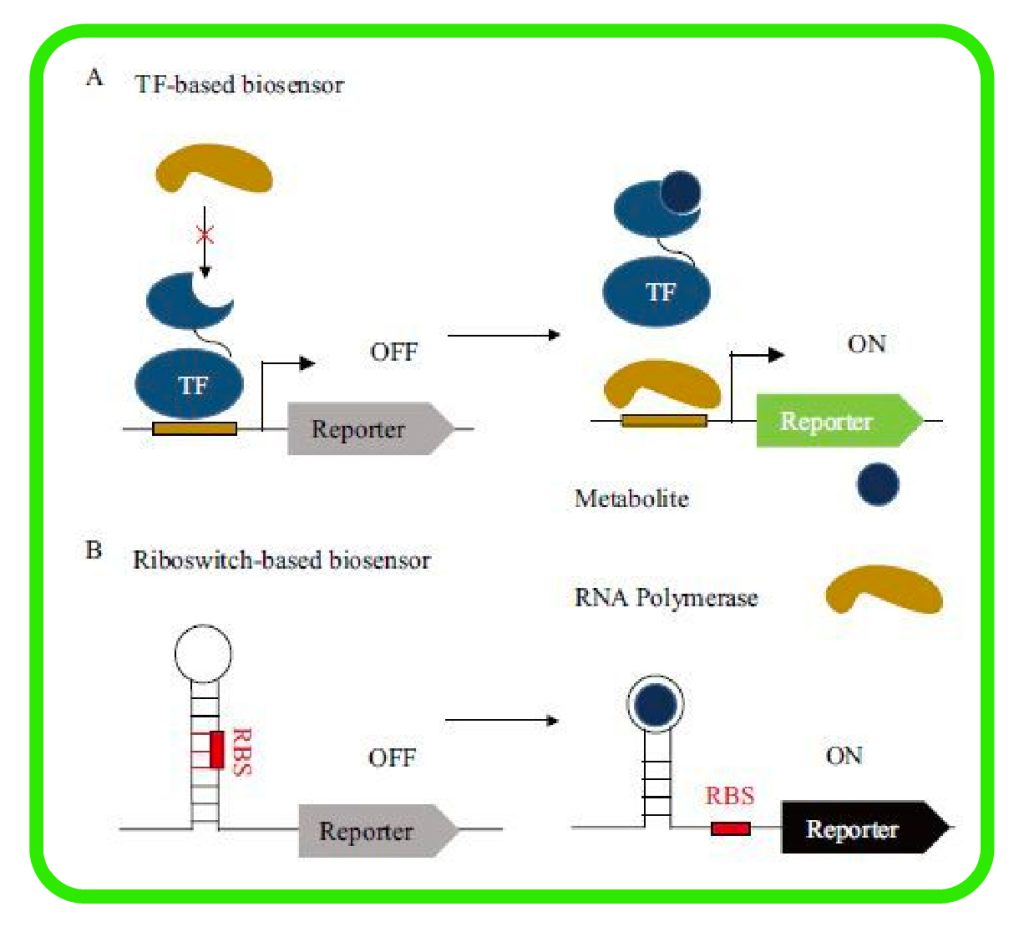
With the rapid development of synthetic biology, metabolic engineering, and systems biology, microorganisms have been used to build "cell factories" to produce substances needed by humans, gradually realizing the efficient production of products including biofuels, drugs, and bulk chemicals.
However, how to quickly screen high yield strains among thousands of strains and build an optimal "cell factory"? The introduction of metabolite biosensors in high-throughput screening for rapid identification, accurate delivery, and efficient sorting is of great value to the front-end R&D of synthetic biology.
To further enhance the responsiveness of biosensors, screening speedStattronics independently developed fluorescence-pH biosensor and obtained related invention patents, which opened up a new path for efficient synthesis of organic acids.


Metabolite biosensors are very dedicated "intelligence agents".The ability to sense changes in intracellular metabolite concentrations and translate them into specific signal outputs helps researchers to rapidly "target" high-yielding strains.has shown great potential for application in the construction of microbial cell factories.
Its main components usually include"Biometric element" and "signal output element"The former is derived from the abundant regulatory elements in nature, such as transcription factors, riboswitches, etc., with different response mechanisms, while the latter can be fluorescent signals, growth advantage, opening and closing of specific metabolic pathways, etc., which can be selected according to "fancy applications".

Typical applications of metabolite biosensors in microbial cell factories include high-throughput screening of high-producing strains of target compounds, dynamic control of microbial intracellular metabolism, and selection of non-genetic intercellular heterogeneity. For example, in combination with Fluorescence Activated Cell Sorting (FACS), theIts ability to increase throughput by 10 percent in high-throughput screening6times.

The application in the construction of "cell factories" is promising, but there is still an urgent need for research to explore the biological components of metabolite biosensors, to further understand the response mechanism and how to better apply them to metabolic engineering.

Among the metabolite biosensor series, pH sensors have been an important research target in scientific research and commercialization. However, traditional pH sensors still suffer from low sensitivity, insignificant pH linearity, narrow detection range, low specificity, and high cytotoxicity, and thus are difficult to be applied to high-throughput screening of cells.
Based on the microfluidic high-throughput screening platform, combined with mature development experience and rich product application scenarios, Stattronics has modified the source composition and optimized the operation path for the pH sensor.First in the industry to develop high performance, low toxicity and wide application fluorescent-pH biosensor.
Conventional pH sensors are composed of small molecule compounds that are inherently toxic and can affect the survival rate of the strain. Tron uses proteins to wrap small molecules to form a natural "barrier" to prevent toxic substances from penetrating the strain. The acid produced by the strain actively leaks out and meets the protein-wrapped sensor, and the highly acid-producing strain emits a strong fluorescence and successfully sends a signal.

With the advantages of sensitive pH sensing, wide sensing range, good sensing linearity and low toxicity, the Stattron bio-fluorescence-pH biosensor is suitable for the detection of substances that produce pH changes during high-throughput screening. For example, the family of organic acid substances, after screening by the novel approach described aboveThe synthesis efficiency of succinic acid was increased by 50% and malic acid by 20%.

We have developed a series of innovative methods and various biosensors in high-throughput screening, which can be widely applied to peptides, amino acids, vitamins and other substances, opening up the industrialization path for large-scale mass production in medical, food, beauty and material fields. Technology is new, and everything grows.
Article source:https://www.163.com/dy/article/I5J4FBU90511CQ6P.html









